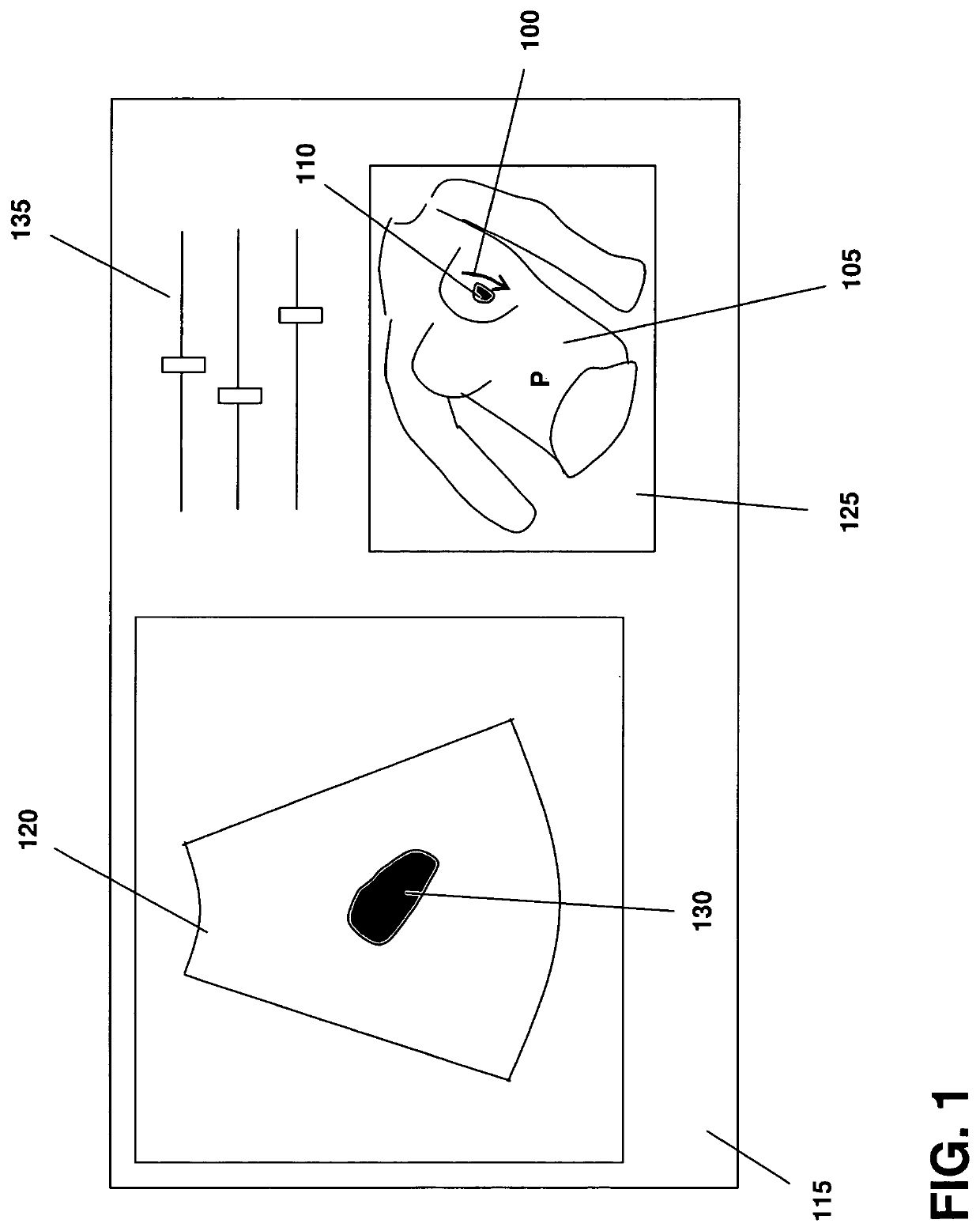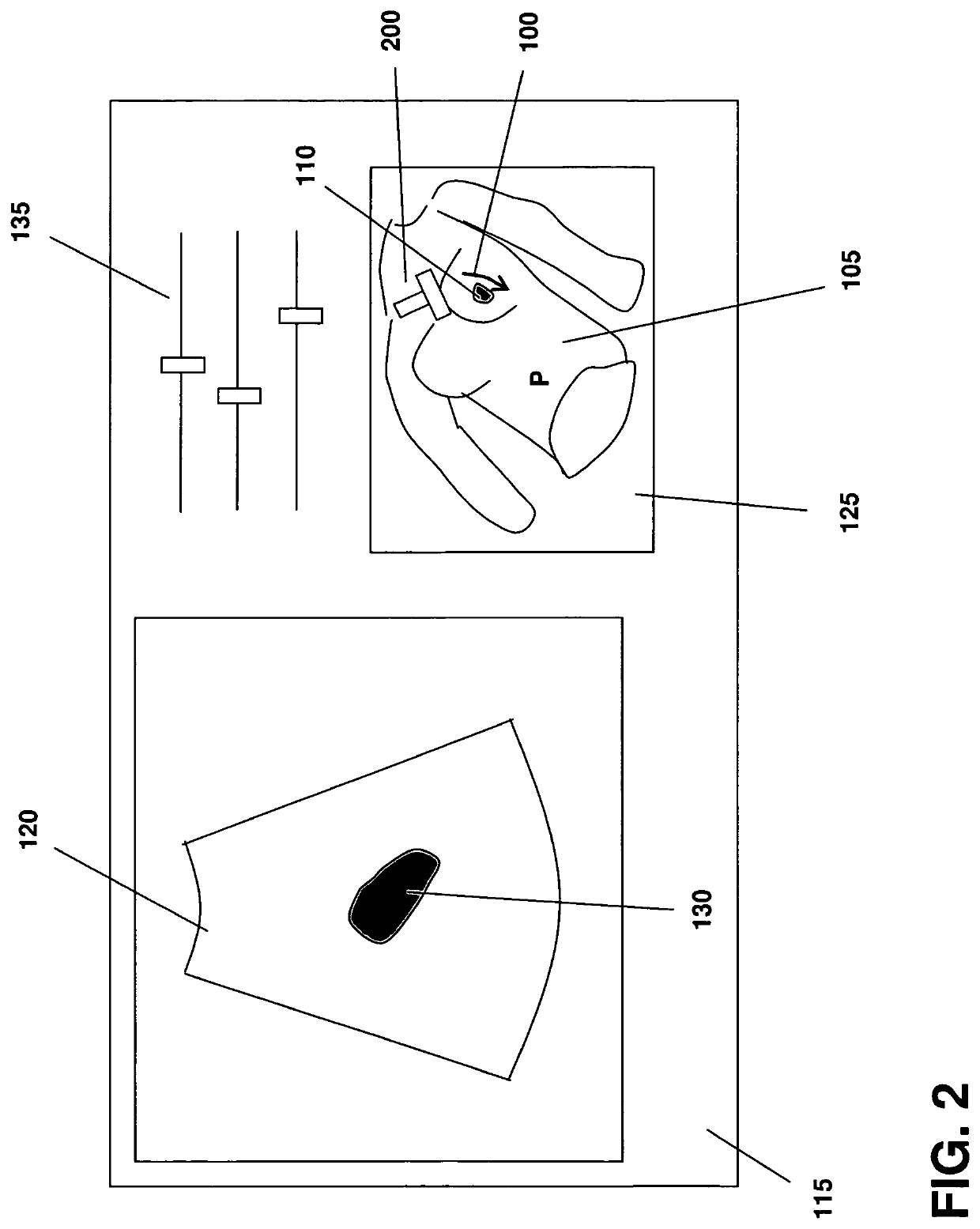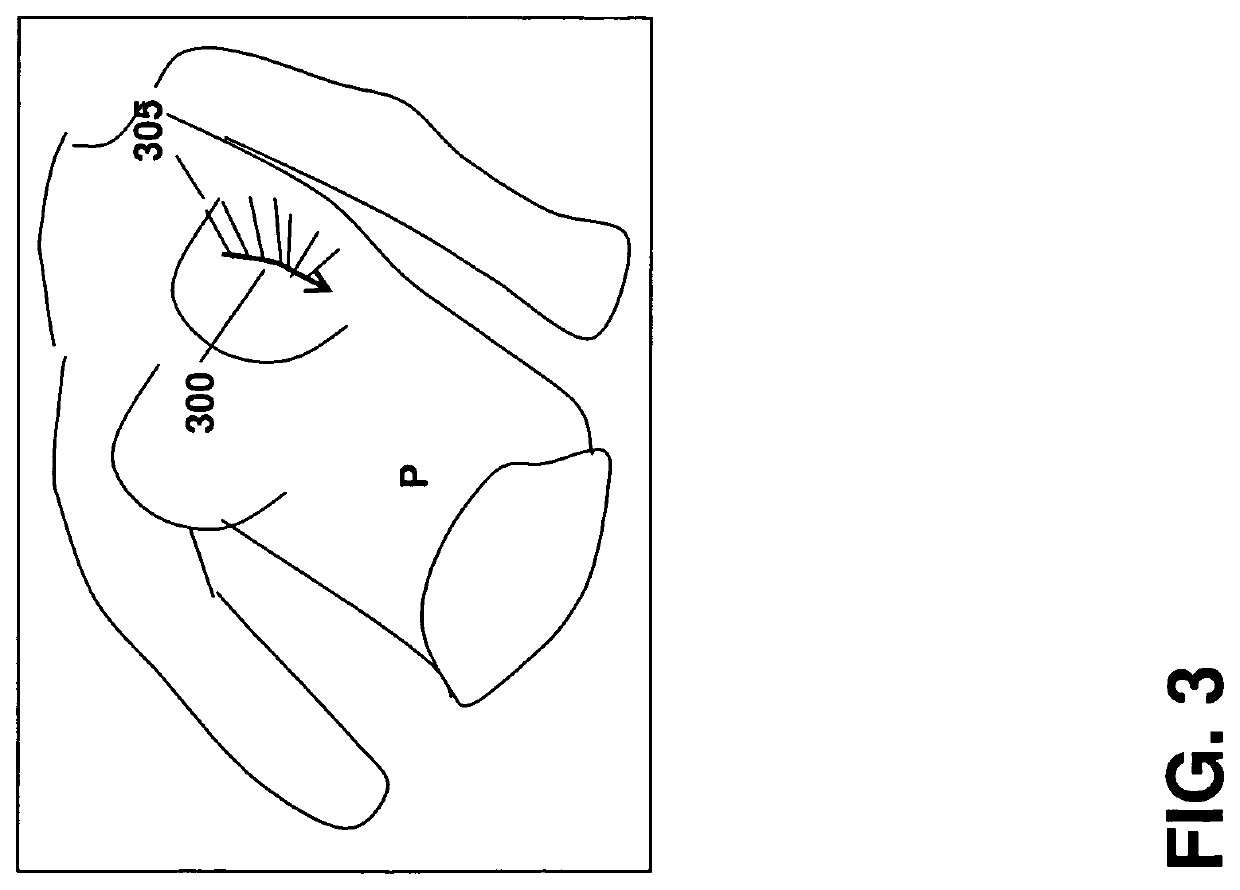Methods and systems for guiding the acquisition of ultrasound images
a technology of ultrasound and acquisition method, applied in the field of guiding the acquisition of ultrasound images, can solve the problems of not having ultrasound training, operator's inability to rely on a consistent location, and others are more difficult to identify, so as to facilitate the identification of the desired ultrasound scanning path, improve ultrasound scanning, and minimize the distance between the line and the ssc
- Summary
- Abstract
- Description
- Claims
- Application Information
AI Technical Summary
Benefits of technology
Problems solved by technology
Method used
Image
Examples
Embodiment Construction
[0019]FIG. 1 illustrates one embodiment of the invention in which a path suggestion line 100 is shown projected onto an external contour 105 of a patient P. A scanning site contour (SSC) 110 is also shown, and may be derived from a three-dimensional surface contour of the anatomical structure of interest, in this case a breast lumpectomy site. In instances in which the SSC lies within the external contour, the contours may be displayed in semi-transparent fashion to allow full visibility of the SSC and other anatomical features. The three-dimensional information may be manipulated to improve viewing (using, for example, conventional visualization devices and / or software), including being be rotated and / or zoomed. The images may also be printed, but preferably are available directly on an ultrasound scanning screen 115 in a treatment planning and / or delivery room. In brief summary, an operator scans the patient using an ultrasound device while reviewing a real-time image 120 to find ...
PUM
 Login to View More
Login to View More Abstract
Description
Claims
Application Information
 Login to View More
Login to View More - R&D
- Intellectual Property
- Life Sciences
- Materials
- Tech Scout
- Unparalleled Data Quality
- Higher Quality Content
- 60% Fewer Hallucinations
Browse by: Latest US Patents, China's latest patents, Technical Efficacy Thesaurus, Application Domain, Technology Topic, Popular Technical Reports.
© 2025 PatSnap. All rights reserved.Legal|Privacy policy|Modern Slavery Act Transparency Statement|Sitemap|About US| Contact US: help@patsnap.com



